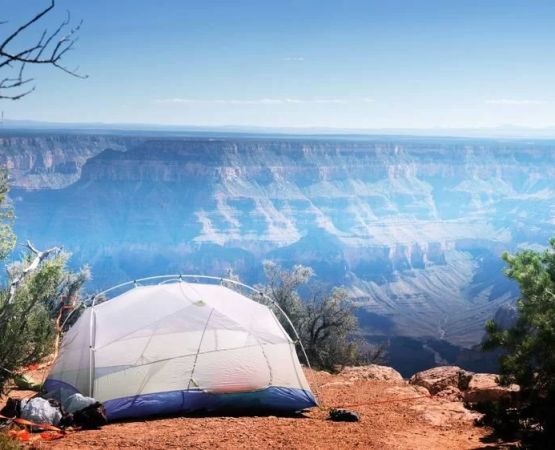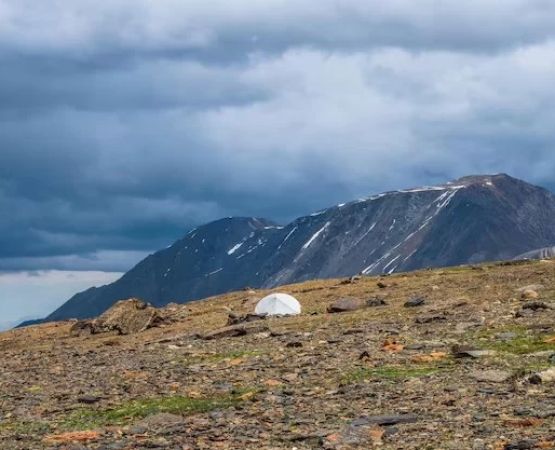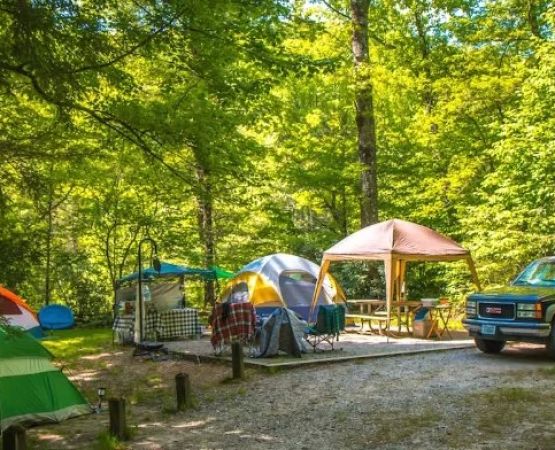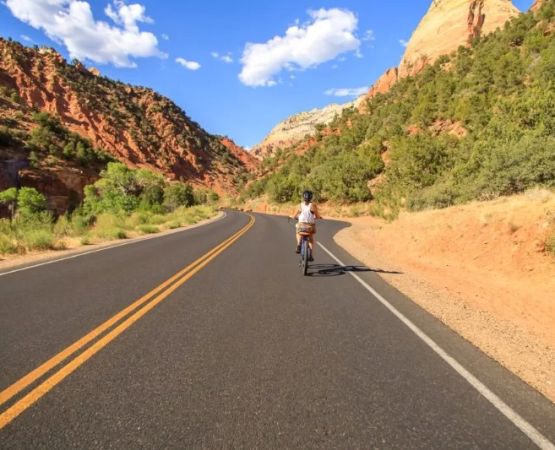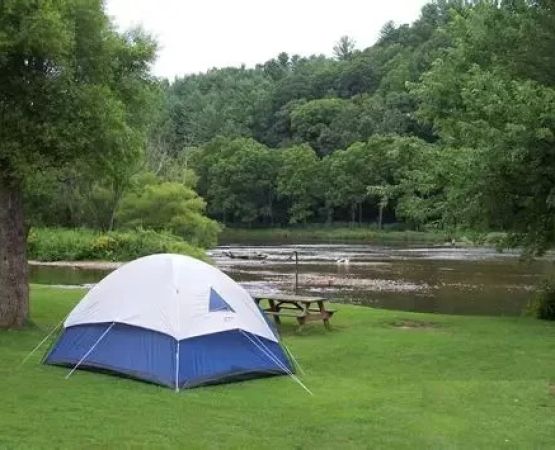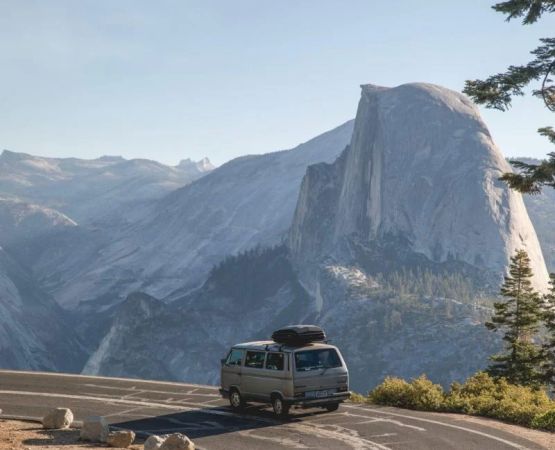How to Avoid Getting Stuck in the Mud While Camping: Tips for a Smooth Trip
Learn how to avoid getting stuck in the mud while camping with these essential tips. From choosing the right campsite to driving safely through muddy terrain, discover the best practices to keep your camping trip smooth and enjoyable.
The Dreaded Mud: How to Avoid Getting Stuck While Camping
One of my most memorable camping experiences involved getting my car hopelessly stuck in the mud. It was a rainy weekend, and we had ventured off the beaten path in search of the perfect remote camping spot. Everything was going smoothly until, of course, we hit a stretch of muddy road. The tires started to spin, and before I knew it, we were buried up to the axles in thick, soupy mud. That was a lesson I won't forget, and since then, I've learned a few essential tricks to avoid this situation and keep my camping trips smooth, even in challenging conditions.
Camping is about immersing yourself in nature, but that doesn’t mean you have to be unprepared for the inevitable mud, especially if you're headed to a campsite with unpaved roads. Mud can make even the most seasoned camper feel like a novice if you're not ready. So, let me share some practical tips that will help you avoid getting stuck in the mud and keep your camping trips safe and stress-free.
1. Check the Weather Before You Go
The first rule of avoiding the mud is to plan ahead. I’ve learned the hard way that checking the weather forecast before you set out is essential. A sudden storm or prolonged rainfall can transform a perfectly navigable road into a quagmire.
Before you embark on your camping adventure, always check the weather for the area where you plan to camp. Be particularly cautious if the forecast predicts heavy rain, as wet roads can quickly become treacherous. If there's a chance of mud, it’s worth considering postponing your trip or finding a more accessible location. After all, camping in the middle of a mud pit isn’t exactly the kind of adventure I’m looking for!
2. Choose Your Campsite Wisely
One of the easiest ways to avoid getting stuck in the mud is to carefully choose your campsite location. Many campsites, especially those in remote areas or national forests, have access roads that can get muddy quickly, especially after a storm. I remember a camping trip in the Ozarks where I misjudged the road conditions, and we had to spend hours digging out the car from a muddy mess. It wasn’t fun, but it taught me to look for sites that are situated on higher ground.
When selecting your campsite, try to avoid low-lying areas where water tends to collect, turning the road into a sticky mess. Instead, aim for areas that are well-drained and have stable ground. If you're camping during a rainy season, consider calling ahead to the park ranger station or campsite manager to ask about road conditions.
3. Know When to Avoid Off-Roading
I’m always up for a bit of off-roading, but I’ve learned that it’s important to know your limits. Off-road driving can be incredibly fun, but when the ground is too wet or muddy, it can be a disaster. That’s something I quickly learned on a camping trip in the Adirondacks. We were driving on a scenic route when we made the mistake of venturing down a narrow trail that was not only muddy but also had sections that were too soft to support our vehicle's weight. The tires spun, and we were stuck.
To avoid getting stuck in a similar situation, always assess the condition of the road before you venture off the beaten path. If the ground is soft, it’s best to stay on more solid ground or use a vehicle that’s specifically designed for off-roading in tough conditions. Additionally, some campsites offer a mix of off-road trails and easier access roads—choose wisely!
4. Ensure Your Vehicle is Prepared
Nothing makes me more grateful than having the right equipment when I'm out in the wilderness, especially when it comes to dealing with mud. Over the years, I’ve learned that a few simple preparations can go a long way in preventing a muddy disaster.
Here are a few must-haves for your vehicle when camping in potentially muddy conditions:
1. Tires: Make sure your tires are suitable for off-road conditions. Mud tires are designed to grip slippery surfaces, and if you frequently camp in muddy areas, they can be a real lifesaver.
2. Tire Chains: Carrying tire chains is a good idea, especially if you're going to be camping in areas that are prone to mud or snow. They can provide extra traction when you’re stuck.
3. Shovel and Recovery Gear: Always bring a small shovel to dig yourself out of tricky spots. Having recovery gear like a tow rope or traction mats can also help immensely if your vehicle becomes stuck. I’ve used traction mats on more than one occasion, and they can make all the difference in getting you unstuck without much hassle.
4. Air Compressor: Sometimes, letting a bit of air out of your tires can improve traction in mud. An air compressor is a great tool to carry in your vehicle in case you need to adjust the tire pressure.
5. Slow and Steady Wins the Race
It’s easy to panic when your vehicle starts to slide in the mud, but I’ve learned that the best thing to do is remain calm and proceed with caution. If you find yourself in a muddy patch, resist the urge to accelerate quickly, as this will only cause your tires to spin and dig deeper into the mud. Instead, apply a gentle amount of throttle and allow your vehicle to slowly inch forward.
If you find that your vehicle is not making progress, it’s time to stop. Continuing to spin the tires can make the situation worse. At this point, using your shovel to clear mud around the tires or placing traction mats underneath the wheels can help you get unstuck. You can also try rocking the vehicle back and forth by shifting between drive and reverse if the mud isn’t too thick.
6. Use Alternative Transportation When Necessary
There have been a few occasions where I’ve found myself parked at the edge of a muddy road and had no choice but to leave my car behind and continue on foot. While this isn’t ideal, it’s important to know when to make the call and avoid getting deeper into the mud. If the road is impassable, it might be better to park your car safely on a solid surface and walk the rest of the way to your campsite.
Additionally, having a backup mode of transportation, like a mountain bike, can help you access campgrounds that are otherwise difficult to reach by car when conditions are wet.
Other Tips for Muddy Camping Conditions
If you're planning to camp in a muddy area, here are some additional tips to help you have a successful and enjoyable trip:
1. Dress Appropriately
Mud can get messy, so make sure you wear waterproof clothing and boots. Waterproof hiking boots are especially helpful, as they keep your feet dry and warm.
2. Stay Clean and Dry
When you’re in the mud, cleanliness becomes a priority. Having wet wipes or a portable camping shower can make all the difference in staying comfortable after a long day of navigating muddy terrain.
3. Plan for Muddy Campsites
If you do end up in a muddy campsite, try to keep your tent and gear elevated by using tarps or a raised platform. This will keep you dry and help prevent water from seeping into your gear.
Final Thoughts on Camping in the Mud
Camping in the Great outdoors can be amazing, but the last thing you want is to get stuck in the mud. By being prepared and planning ahead, you can minimize the chances of a muddy disaster. With the right gear, careful campsite selection, and an understanding of how to handle muddy roads, you'll be able to enjoy your camping experience to the fullest—no mud, no problem!
